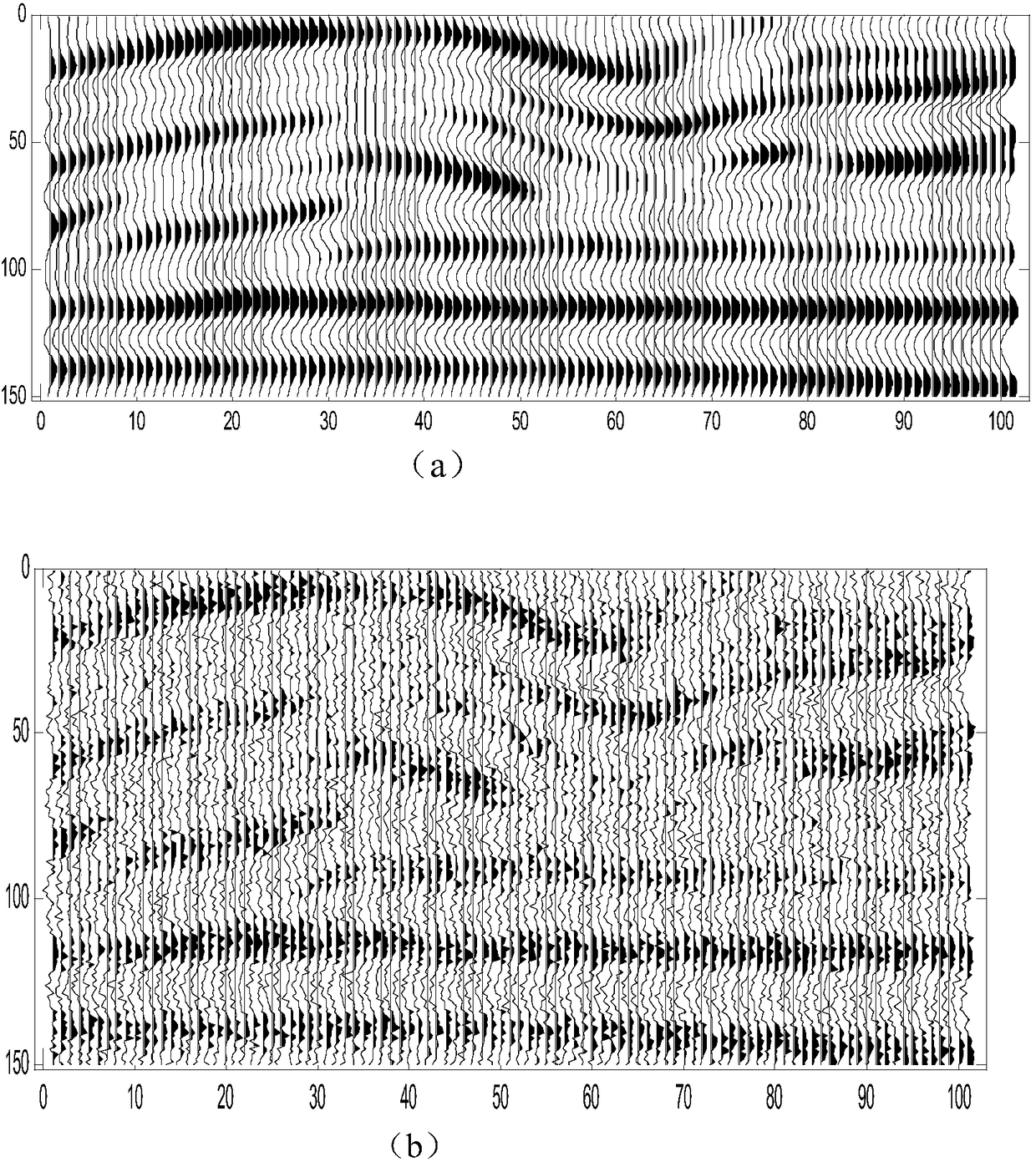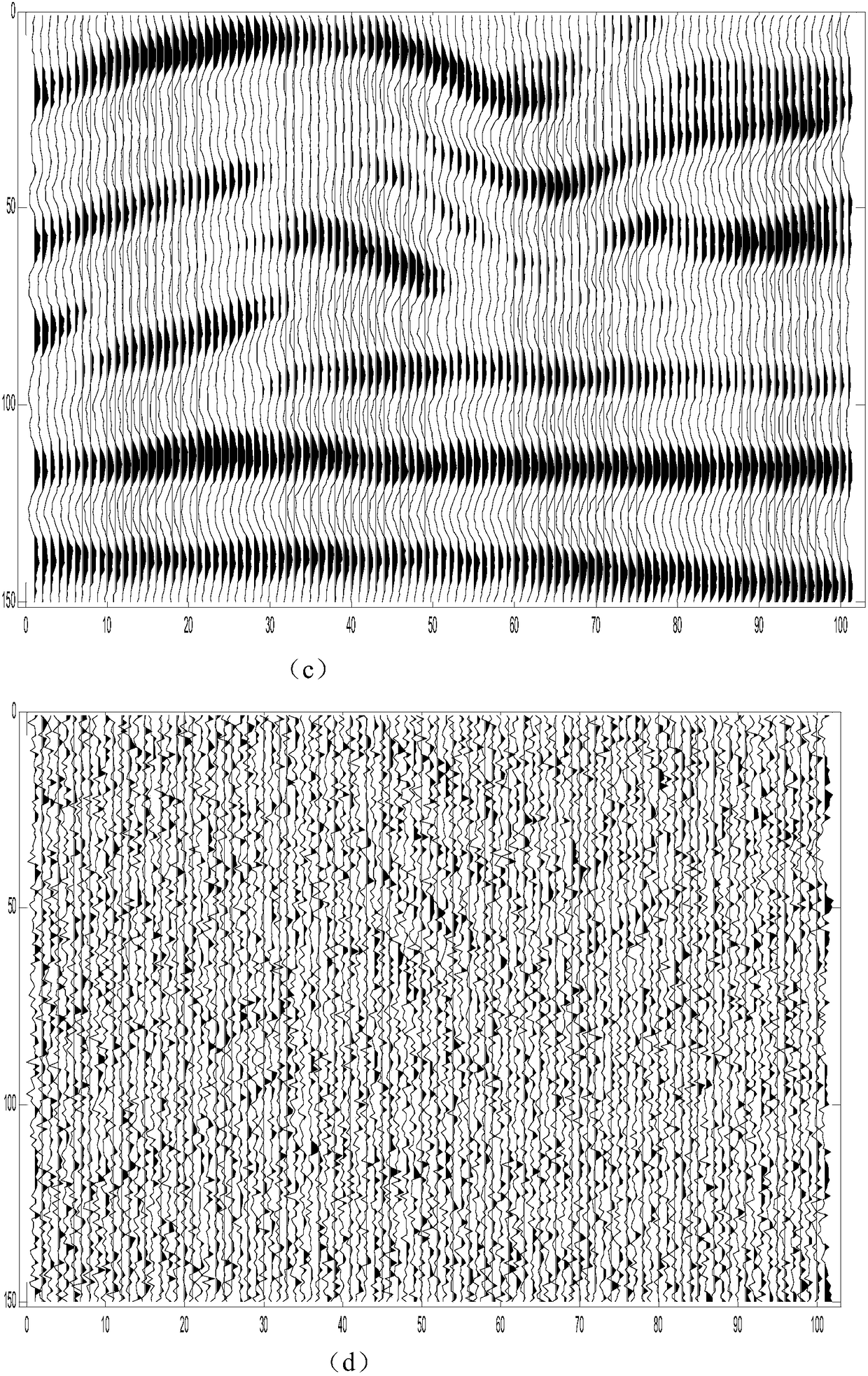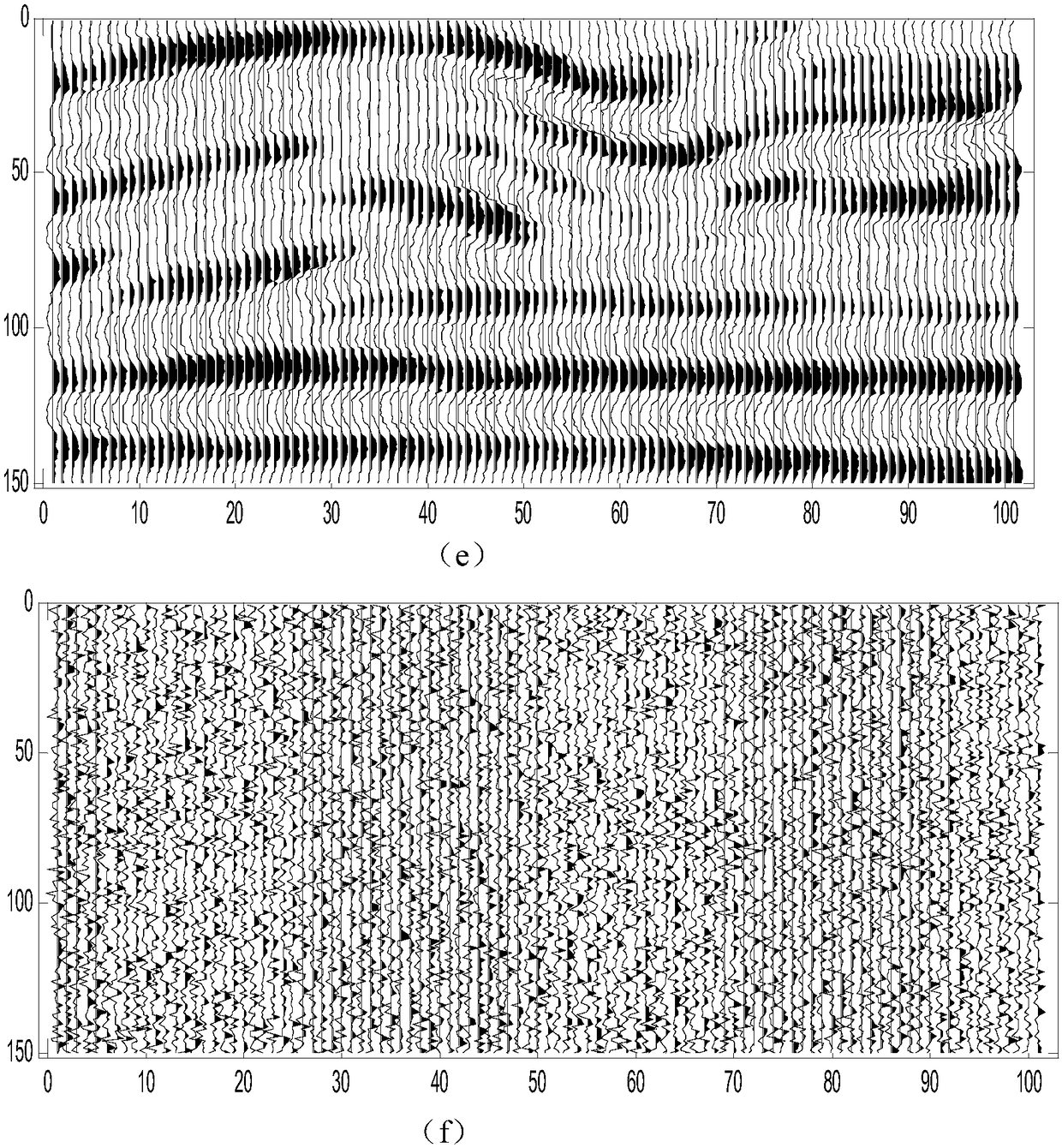Amplitude-preserved boundary-protected signal-noise enhancement method based on linear inversion
A linear inversion and amplitude-preserving technology, applied in the field of oil and gas geophysical exploration, can solve the problems affecting the quality of seismic data, difficult to take into account high signal-to-noise ratio and high fidelity, unfavorable structural boundary information protection, etc., to achieve the protection of structural information, The effect of strong smoothing and protection of structural boundaries
- Summary
- Abstract
- Description
- Claims
- Application Information
AI Technical Summary
Problems solved by technology
Method used
Image
Examples
Embodiment 1
[0040] Such as figure 1 as shown, figure 1 a is a noise-free seismic data, figure 1 b is a seismic data with 50% random noise added; the noisy seismic data is processed by using the conventional linear denoising method and the signal-to-noise enhancement method based on linear inversion in the present invention.
[0041] In the conventional linear denoising method, the calculation formula of the noise-free data u is as follows
[0042]
[0043] The calculation formula for solving the objective function u by using the least square method is as follows
[0044] u=(I+λ(D t T D. t +D x T D. x )) -1 d (Formula 7);
[0045] Among them, I represents the identity matrix, D t and D x is the forward difference operator, D t T and D x T is the backward difference operator.
[0046] If the parameter λ=1.6 is set, the processed seismic data u can be obtained by formula (7) using the conventional linear denoising method, as figure 1 As shown in c; the removed noise data...
Embodiment 2
[0051] Such as Figure 4 as shown, Figure 4 a is a field seismic data containing noise, which is processed by the conventional linear denoising method and the signal-to-noise enhancement method based on linear inversion proposed by the present invention.
[0052] In the conventional linear denoising method, the calculation formula of the noise-free data u is as follows
[0053]
[0054] The calculation formula for solving the objective function u by using the least square method is as follows
[0055] u=(I+λ(D t T D. t +D x T D. x )) -1 d (Formula 7);
[0056] Among them, I represents the identity matrix, D t and D x is the forward difference operator, D t T and D x T is the backward difference operator.
[0057] Use the conventional linear denoising method to calculate the processed seismic data. If the parameter λ=3 is set, then the processed seismic data u can be obtained by calculating (Equation 7) as Figure 4 Shown in b; the removed noise data is giv...
PUM
 Login to View More
Login to View More Abstract
Description
Claims
Application Information
 Login to View More
Login to View More - R&D
- Intellectual Property
- Life Sciences
- Materials
- Tech Scout
- Unparalleled Data Quality
- Higher Quality Content
- 60% Fewer Hallucinations
Browse by: Latest US Patents, China's latest patents, Technical Efficacy Thesaurus, Application Domain, Technology Topic, Popular Technical Reports.
© 2025 PatSnap. All rights reserved.Legal|Privacy policy|Modern Slavery Act Transparency Statement|Sitemap|About US| Contact US: help@patsnap.com



